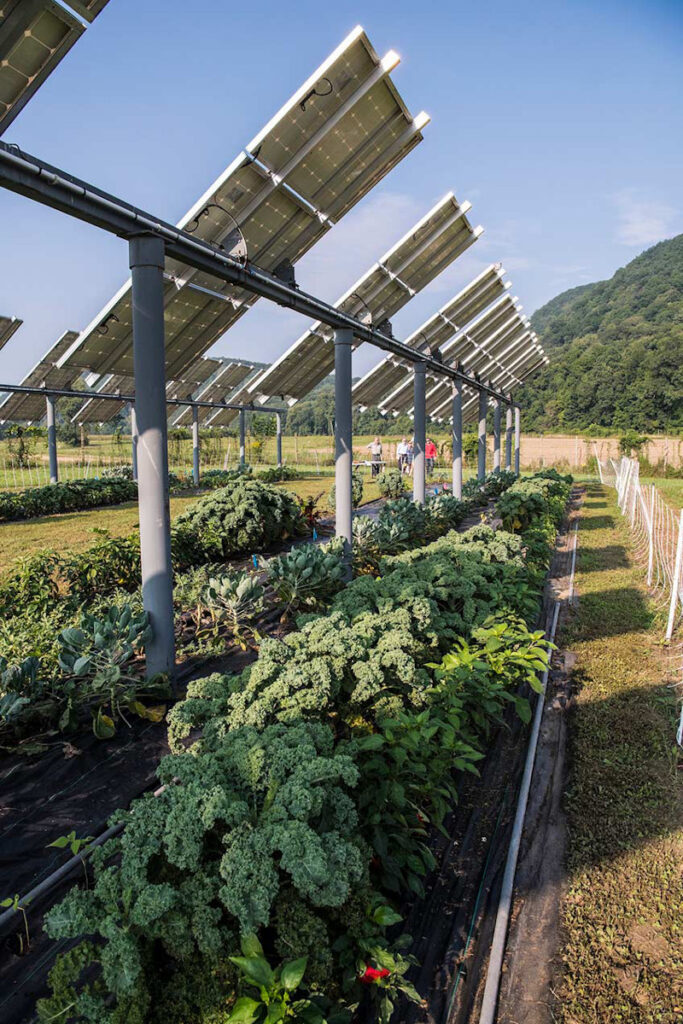Exclusive Interview: We spoke to Senior Policy Analyst at GRACE Communications Foundation, Kai Olson Sawyer, about the water footprint of food and ways tackle food-water-energy nexus challenges
Earth has a lot of water. 70% of the planet’s surface is covered with it, and the US Geological Survey estimates the total volume of water on Earth to be 326 million cubic miles. To put that into perspective, if Earth was the size of a basketball, all its water would fit into a ping pong ball. But while water is clearly abundant, freshwater is not.
Only 2.5% of the world’s water is fresh, and most of it is locked up in ice (68%) or deep underground (30.8%), with just 1.2% found in surface waters like lakes and rivers. Of all the water used globally, 11% goes to domestic use, 19% for industry and 70% for agriculture, according to UNESCO figures.
While the majority of agriculture depends on rainfall, many regions are forced to tap into surface and groundwater supplies for irrigation. 40% of the world’s crops are produced from irrigated agriculture.
The further you narrow down global water use, the more complex it gets. It also becomes clear that agriculture has a disproportionate role in water use and, by extension, tackling water-related challenges.
“You can’t talk about water footprint without talking about the biggest water consumer – food and agriculture,” says Kai Olson-Sawyer, Senior Policy Analyst at New York-based non-profit GRACE Communications Foundation.
Sawyer has been working on GRACE’s water footprint project for 15 years. Central to the project has been creation of a water calculator that provides evidence-based data on consumer and business-level water footprints. The calculator is based upon data from the Water Footprint Network.
The water footprint concept was developed by Dutch researcher, Professor Arjen Hoekstra in 2002, and measures the amount of water used to produce each of the goods and services we use.
“Everything we use has a water footprint,” says Olson-Sawyer. “The footprint of some things, like flushing the toilet, are obvious, but others are more discrete.”
Rather unsurprisingly, diet usually makes up the largest part of a person’s water footprint.
Animal products like meat, dairy and eggs have the highest water footprint of all foods. On average it is just over 15,000 litres of water to produce just 1 kg of steak. Most of the water footprint of meat comes from the water that goes into growing the crops that livestock eat. One Greenpeace report found that 71% of agricultural land in the EU is used to grow crops for livestock feed.
“While there is a lot of public attention around the carbon footprint of animal products, there is less awareness about the water footprint. Even though the concept was introduced around the same time as carbon footprint, it hasn’t gained as much traction,” says Olson-Sawyer.
Diet usually makes up the largest part of a person’s water footprint
GRACE Communications Foundation runs a campaign, Foodprint, that aims to draw attention to the environmental impacts of the food we eat. They recently launched the Water Footprint of Food guide which contains global data on over 100 foods and beverages.
By creating and disseminating information the campaign aims to encourage awareness on water-related issues and how they relate to food production. Olson-Sawyer says that this can help foster a public constituency that is more likely to support future-thinking policies on water management and one that doesn’t take water for granted.
“Over my 15 years on this campaign I’ve noticed how the public has become more accepting of the fact that water is used for everything,” he says. “As droughts and water scarcity take hold across the world, the reality of water footprint and its impacts are taking hold in the public imagination – it can’t be ignored.”
However, Olson-Sawyer points out that while consumers are becoming aware of their water footprint, that doesn’t always translate to action. Especially when it comes to food choices.
“While people are receptive to reducing their direct water use (fewer showers, flushing etc.) they tend to be less receptive to changing their food choices even though food tends to make up the biggest proportion of an individual’s water footprint. This is because food is a cultural phenomenon,” he says.
While there is an onus on individuals and businesses to start consuming less water-intensive products like meat and dairy, there is also increasing pressure on farmers to make their operations more water efficient. This pressure comes from market forces, as the price of water starts to rise, but also from competition with other big water users like municipalities and industry as water becomes scarcer.
“Agriculture has a responsibility to use less water, they have no choice. Essentially they won’t be able to operate in many areas unless they adapt to water availability, which in many places is decreasing. It’s a matter of business survival. Water availability has a direct impact on yields,” says Olson-Sawyer.
He continues: “Farmers will have to adapt to water scarcity by doing more with less. This can be achieved through water technologies like smart irrigation systems and by reusing and recycling. But some farmers will also have to face the reality that they might have to change how, when, where and what they grow.”
While there are many water technologies available to farmers, it is important to understand that what works in one place won’t necessarily work in another, says Olson-Sawyer.
For example, it is helpful to review different irrigation systems to understand why drip systems, despite their reputation for water efficiency, aren’t always appropriate for every situation, and why water productivity – doing more with less water – is often more important than which irrigation system a farmer chooses.
The responsibility for water efficiency isn’t simply down to the farmers either. Government has a central role to play in incentivising water-wise agriculture and supporting farmers in the transition.
One example of this comes from the Colorado river basin, which is drying up fast, where farmers are being paid to fallow their fields. Fallowing is where fields are left unplanted, and hence unirrigated, in an effort to save water in times of drought. The crops are then sourced from another location where water is in more plentiful supply, to ensure food security is not affected. Initiatives like these are being funded partly through the Inflation Reduction Act, which has ringfenced $4 billion to help Western states manage water shortages on the Colorado river.
This is just one way that governments can support farmers in adapting to the new water, and climate, reality. Climate change primarily manifests itself in changes in the water cycle. Climate problems and water problems are one in the same. Energy is also highly dependent on water, and is largely responsible for climate change.
Water, food and energy form a nexus at the heart of sustainable development, and there is an increasing realisation that we can only meet the SDGs by implementing solutions that address all three pillars.

A triple win? Agrivoltiacs – the use of land for both crops and solar power generation – has been shown to significantly reduce water use and increase yields.
As the UN puts it, “efficiency measures along the entire agrifood chain can help save water and energy, such as precision irrigation based on information supplied by water providers, and protection of ecosystems alongside agriculture and energy production.”
Technologies that save water have knock-on positive benefits for agriculture and energy.
“Building climate resilience is also building water resilience and it has to be understood as such,” says Olson-Sawyer. “If you really want to tackle climate change you have to address the problems with water-related risks. Just look at Pakistan, this year they had an incredible drought and then suddenly one third of the country was inundated. Agriculture will have to adapt with this reality. Water security is food security.”
Related articles:
Water Utilities Set the Pace in Race to Reduce Carbon Emissions







